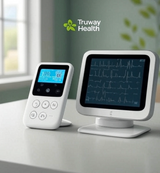How to Properly Maintain and Clean Your Medical Equipment
How to Properly Maintain and Clean Your Medical Equipment
Maintaining and cleaning medical equipment is crucial to ensure the safety and well-being of patients and healthcare providers. Proper maintenance not only extends the lifespan of the equipment but also ensures accurate and reliable performance. Here are some essential steps to help you properly maintain and clean your medical equipment.
1. Understand the Manufacturer’s Guidelines
Every piece of medical equipment comes with a manufacturer’s manual that provides specific instructions on cleaning and maintenance. Familiarize yourself with these guidelines to avoid damaging the equipment.
2. Use Appropriate Cleaning Agents
Use disinfectants and cleaning agents recommended by the manufacturer. Avoid harsh chemicals that can damage sensitive components. Commonly used disinfectants include alcohol-based solutions, hydrogen peroxide, and bleach solutions.
3. Wear Protective Gear
Always wear gloves and other protective gear when cleaning medical equipment to protect yourself from potential contaminants and cleaning agents.
4. Disassemble When Necessary
For equipment that can be safely disassembled, take it apart to ensure a thorough cleaning. Pay special attention to areas that come into direct contact with patients.
5. Clean Visible Dirt and Debris
Use a soft brush or cloth to remove any visible dirt and debris from the equipment. Ensure that you reach all the nooks and crannies where dirt can accumulate.
6. Disinfect Surfaces
Wipe down all surfaces with disinfectant wipes or sprays. Ensure that the equipment is completely covered and allow the disinfectant to sit for the recommended contact time to effectively kill any pathogens.
7. Rinse and Dry
If the cleaning process involves rinsing, ensure that all parts are thoroughly rinsed to remove any residue from cleaning agents. Dry the equipment completely to prevent any moisture-related damage or mold growth.
8. Reassemble and Inspect
After cleaning and drying, carefully reassemble the equipment. Perform a thorough inspection to ensure all parts are properly reattached and functioning as expected.
9. Perform Regular Maintenance Checks
Schedule regular maintenance checks as per the manufacturer’s guidelines. Regular checks can help identify any issues early and ensure that the equipment remains in optimal condition.
10. Document Cleaning and Maintenance Activities
Keep detailed records of all cleaning and maintenance activities. Documentation helps in tracking the maintenance history and ensures compliance with healthcare standards.
By following these steps, you can ensure that your medical equipment remains clean, safe, and in good working condition, ultimately contributing to better patient care and operational efficiency. Proper maintenance and cleaning are not just about compliance but also about ensuring the highest standards of healthcare.
Truway Health News & Insights
Revolutionizing Industrial Pharmaceutical Manufacturing: Truway Health’s Innovative Approach in 2025
As of 10:57 AM EDT on Tuesday, July 01, 2025, the pharmaceutical industry is undergoing a transforma...
Pioneering the Future of Healthcare: Truway Health’s Breakthrough Medical Devices Transforming Patient Care in 2025
The healthcare landscape is evolving at an unprecedented pace, driven by technological innovation an...
Truway Health's Global Safeworld Ports Initiative: Delivering Innovation to the Finish Line
At Truway Health, our mission has always been to ensure reliable, high-quality healthcare delivery f...
Empowering Your Health Journey with Truway Health
At Truway Health, we believe that your health is your greatest asset. Our mission is to guide you to...
The Science Behind Sea Moss: Why It’s a Game-Changer for Immunity
In the quest for better health, nature often holds the key. Enter sea moss, a nutrient-packed superf...
How to Build a Morning Routine for Optimal Energy and Focus
1. Wake Up Consistently and Hydrate (5-10 minutes) Why it matters: A consistent wake-up time regula...







